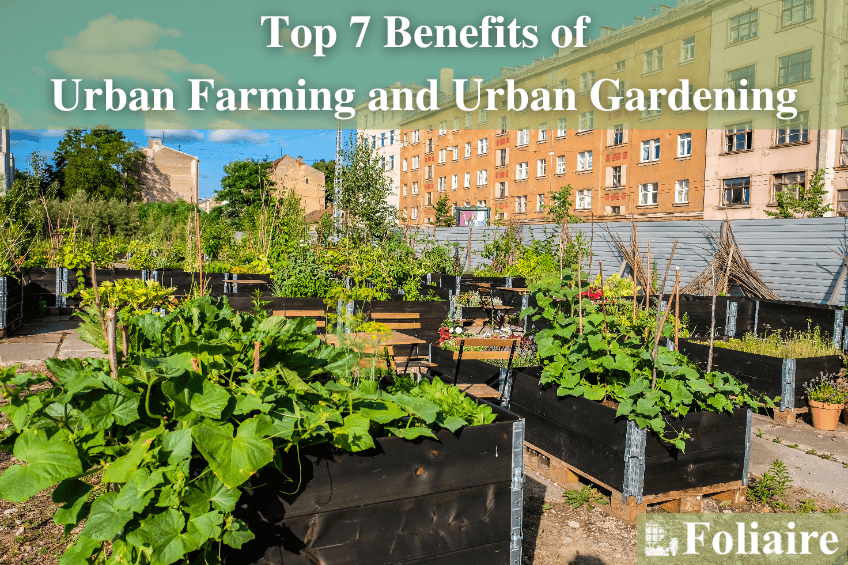The Single Strategy To Use For City Blooming
Wiki Article
The 10-Second Trick For City Blooming
Table of ContentsThe 6-Second Trick For City BloomingThe City Blooming StatementsThe Facts About City Blooming UncoveredRumored Buzz on City BloomingThe City Blooming Diaries
Fascinated in growing food for sale in the City of Chicago? Below is a listing of regularly asked concerns regarding the regulations and policies that farmers ought to think about when planning a metropolitan agriculture job.
The zoning modification does not change any other codes handling composting, building authorizations, purchasing or leasing City had building, business licenses or ecological contamination. There are existing codes that regulate these issues and they continue to be completely impact and may apply to your task. Community yards are generally had or taken care of by public entities, civic organizations or community-based companies and preserved by volunteers.
Urban ranches grow food that is meant to be marketed, either on a nonprofit or for-profit basis. As a result of their commercial function, urban farms require a service license. Yes. A neighborhood garden is enabled to sell surplus produce that was grown on site if the sales are accessory or subordinate to the yard's key purpose described over.
City Blooming Can Be Fun For Anyone
Composting is permitted yet just for plant product that is produced and utilized on site. The amount of compost product can not exceed 25 cubic backyards at any kind of offered time according to the standards in 7-28-715 of the City's Municipal Code. Yes. Because the soil at many brand-new yard sites needs amending, garden compost, soil, timber chips, or other materials can be gotten to build or enhance the expanding space - City gardening.
If a structure permit is called for then the hoophouse will be thought about an accessory building. You can figure out even more regarding the structure authorization demands by calling the Division of Buildings. The 25,000-square-foot dimension restriction is meant to prevent a single neighborhood yard from controling a provided block or interfering with the block's existing residential or business personality.
The restriction does not relate to gardens situated in Public Open Space (POS) districts. Can there be even more than one neighborhood yard that is 25,000 square feet on a single block? Yes. The dimension limit puts on individual yards, not to individual blocks. No. Secure fencing is not required, nonetheless, gardens that have big parking lot may be required to install fencing or various other landscape design functions.
The 7-Minute Rule for City Blooming
B1 & B2 areas need that all industrial usage activities be conducted indoors. Is fence required for urban ranches? Fences may be required, along with landscape design and testing, for specific car park locations and outside job or storage areas depending on place and the particular task taking place.Urban farms need structure permits and zoning approvals prior to building (City gardening). Other forms of city testimonial may be called for depending on certain frameworks, activities, dimension, landscaping, licensing, public health and stormwater monitoring issues.
The Division of Organization Matters and Consumer Protection can assist identify the details kind of organization license that's required. Off street auto parking is needed for most commercial tasks in Chicago. The called for number of car park rooms is based on the number of staff members functioning on website and not the square video footage of the expanding room.
The 10-Minute Rule for City Blooming

Yes. A metropolitan ranch can market garden compost product produced on site, however, the procedure has to abide by the laws in 7-28-715 of the Chicago Municipal Code. Yes. Aquaponic systems are allowed inside content on city ranches in several zoning districts. However, a zoning evaluation and structure permit is needed in order to mount structures or systems and a company license is called for as described above.
Up to five hives or colonies of honey might be maintained as an accessory usage. Beekeepers have to register with the Illinois Division of Agriculture. For even more information about the proposed zoning amendment you might speak to the Division of Housing and Economic Development, Bureau of Preparation and Zoning at 312.744.8563.
Farming in cities and metropolitan areas A metropolitan ranch in Chicago. Urban agriculture refers to numerous techniques of cultivating. https://city-blooming-46604195.hubspotpagebuilder.com/blog/city-gardening-cultivating-green-spaces-in-urban-areas, handling, and dispersing food in urban locations. The term additionally puts on the area tasks of pet husbandry, tank farming, beekeeping, and gardening in a metropolitan context. Urban agriculture is identified from peri-urban agriculture, which happens in backwoods beside residential areas.
The Basic Principles Of City Blooming
, who look for to develop social networks started on a shared values of nature and community holism. These networks can establish by means of formal institutional assistance, becoming integrated right into neighborhood town preparation as a "change town" motion for lasting city advancement.Some of the first evidence of metropolitan farming comes from Mesopotamia.
Report this wiki page